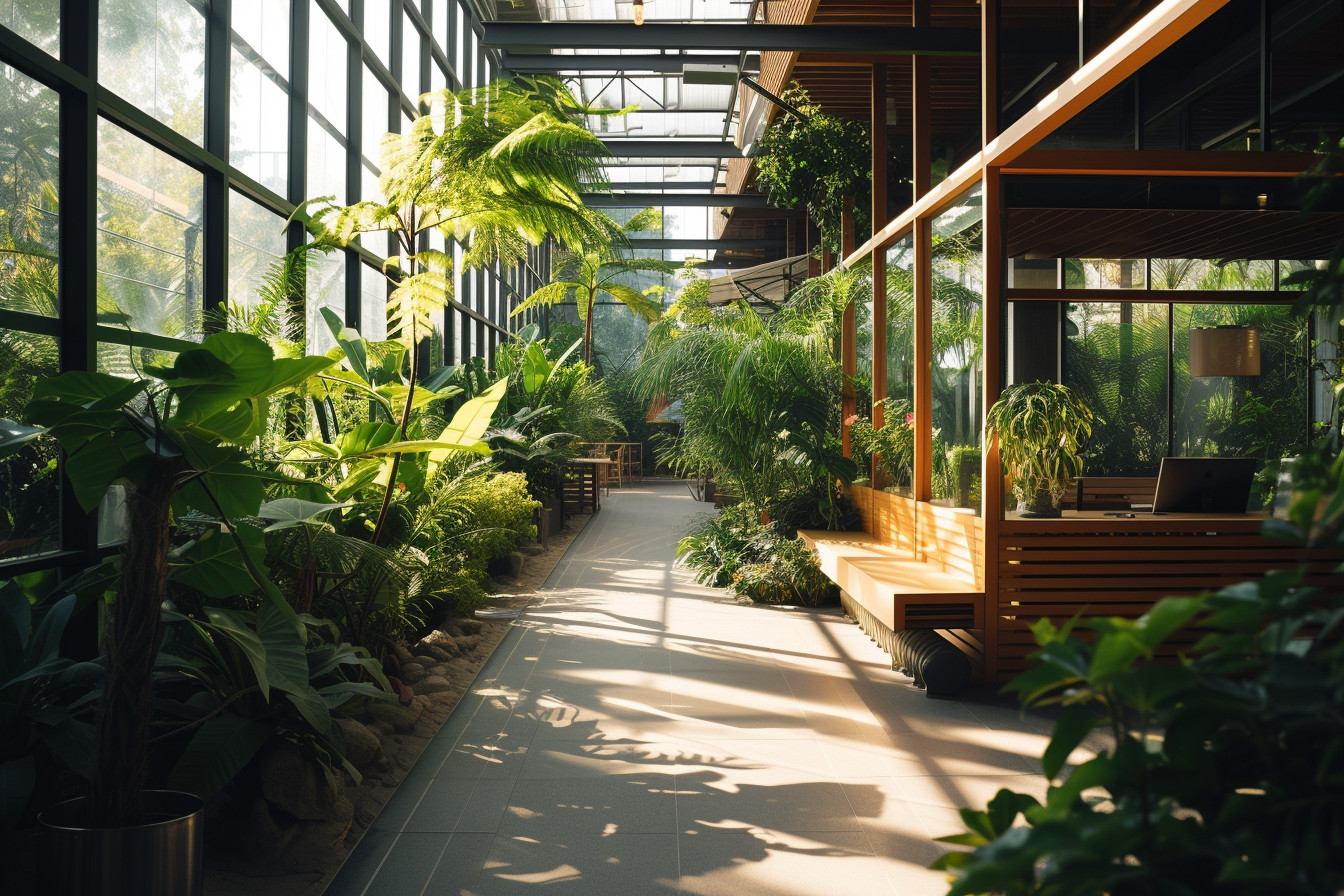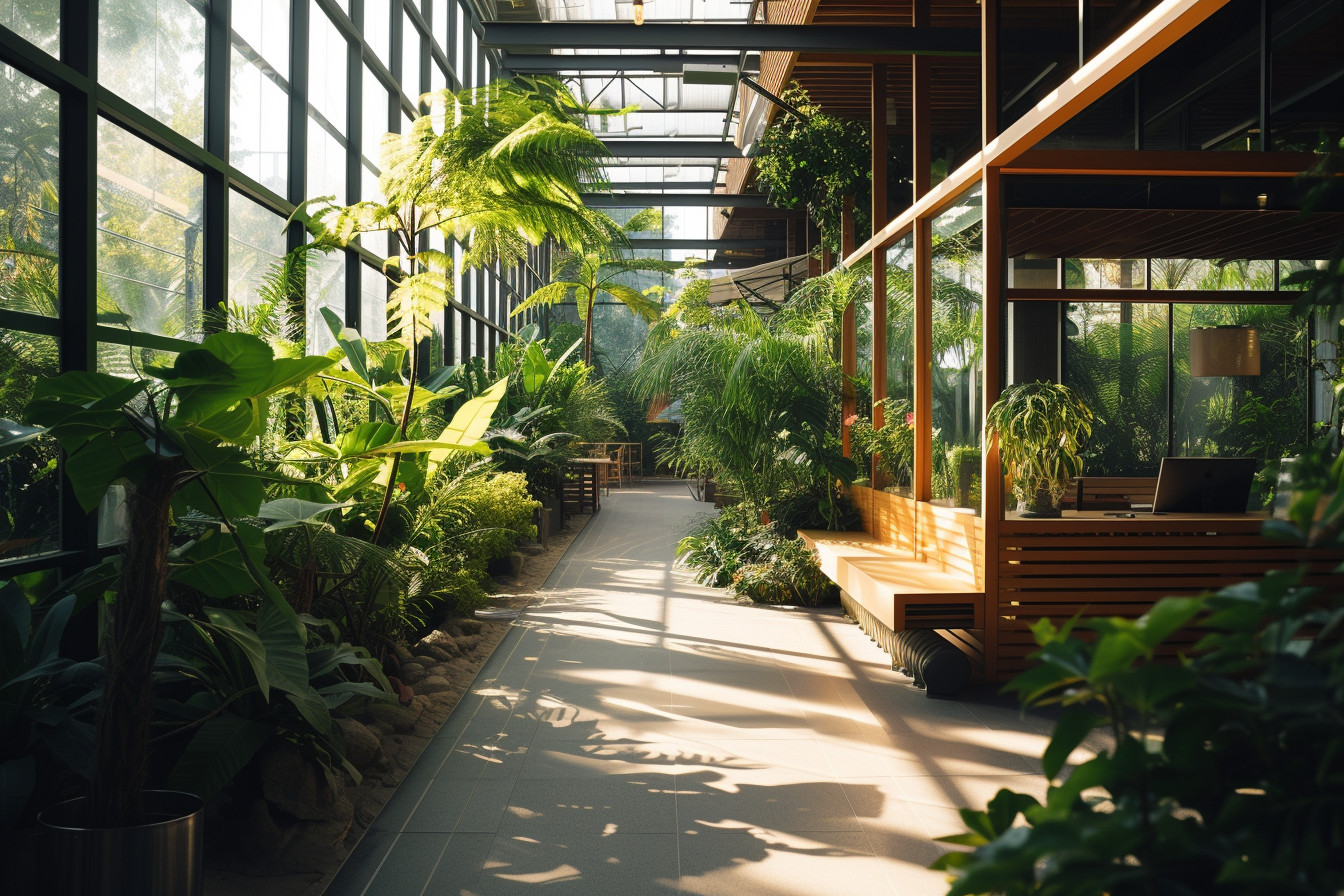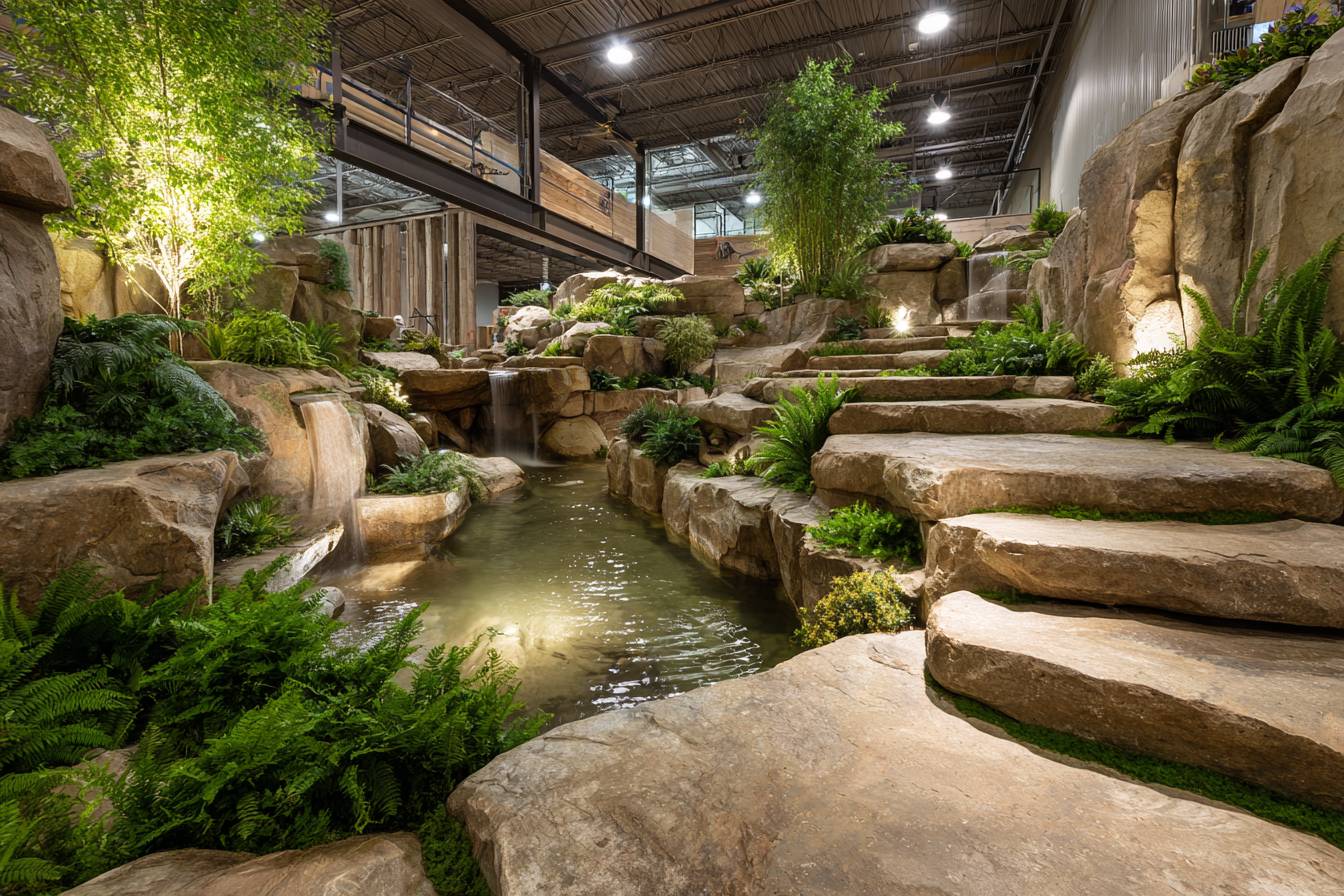After eight years of modifying our home and yard to better support my wife’s health needs following her stroke, I’ve come to understand something that should have been obvious all along: the spaces we live in have a profound impact on how we feel, how we heal, and how well we age. What I didn’t know back then was that there’s actually a whole field of design based on this principle, something called biophilic design that focuses on bringing nature back into our built environments.
I stumbled into this concept while researching therapeutic gardens for elderly people. Our daughter had sent me articles about memory care facilities seeing real improvements in resident wellbeing after redesigning their outdoor spaces with more natural elements. As I dug deeper, I found studies showing that exposure to nature – even just views of trees from a window – can lower stress, reduce blood pressure, and improve mood. For someone watching their spouse struggle with chronic pain and depression, this wasn’t just academic theory.
## What I’ve Learned About Water, Light, and Natural Materials
One of the first things I tried was adding a small water feature to our accessible garden area. I’d read that the sound of flowing water has a calming effect, and frankly, I was willing to try anything that might help my wife’s pain levels. I started simple – a small fountain from the garden center that I could set up near the raised beds where she tends her plants.
The difference was immediate and noticeable. She started spending more time outside, seemed more relaxed when working in the garden. Even I found myself drawn to sit near the fountain in the evenings. There’s something about the sound of moving water that makes you slow down, take a deeper breath. It’s not magic – it’s just that we spent most of human history living near water sources, and our brains are still wired to find those sounds comforting.
I had similar success with improving natural light throughout the house. After my wife’s stroke, she was spending more time indoors, often in the darker back rooms. I enlarged several windows where I could and replaced heavy curtains with lighter ones that let in more sunshine while maintaining privacy. The combination of better light during the day and the outdoor time in the garden has definitely helped with her sleep patterns and overall mood.
The tactile aspect of natural materials has been important too, especially for someone dealing with mobility issues. When I built the raised garden beds, I used rough-cut cedar that ages naturally and feels good to the touch. The pathways are made from materials with different textures – smooth stones in some areas, rougher brick in others. My wife says running her hands along the different surfaces is soothing when her arthritis is acting up.
## Practical Solutions for Real Problems
What appeals to me about this approach is that it’s not just about making things look pretty – though that’s a nice bonus. It’s about solving actual problems. When we had drainage issues in the backyard that were creating muddy areas where my wife’s wheelchair would get stuck, I researched rain gardens. These are landscaped depressions designed to capture and filter runoff water while supporting native plants.
I dug out a low area near where the gutters drain and planted it with native Michigan plants that thrive in wet conditions – things like wild bergamot, blue flag iris, and cardinal flower. Not only did this solve the drainage problem, but within two seasons we were seeing birds and butterflies we’d never noticed before. The space became more interesting and functional at the same time.
This kind of problem-solving approach makes sense to my engineering background. You identify an issue, research solutions, and implement something that addresses multiple needs. The rain garden handles stormwater, reduces maintenance, supports local wildlife, and gives my wife something beautiful to look at from her chair inside.
I’ve been using more reclaimed materials in these projects too, partly for budget reasons but also because they add character. The brick edging around the accessible paths came from a demolished building downtown – probably dates to the 1920s. Those bricks have weathered naturally and have a worn texture that’s pleasant to touch. Using materials with history feels right in a house we’ve lived in for almost four decades.
## Making Small Spaces Work
One thing I want to emphasize is that you don’t need a huge yard or unlimited budget to apply these principles. Some of the most effective changes I’ve made have been small-scale. A window box with herbs that my wife can tend from inside when the weather’s bad. A small seating area positioned to catch morning sun and evening bird activity. Containers with different plants positioned so there’s always something flowering or changing with the seasons.
Our neighbors in the condo complex down the street have shown me how much you can accomplish in limited space. One couple created a vertical garden on their small balcony using wall-mounted planters. They grow herbs, small vegetables, and flowers in a space that’s maybe six feet by four feet. They say it’s transformed how they feel about living in that small unit – gives them a project and a connection to growing things even without a traditional yard.
I helped another neighbor modify his small front courtyard to work better for his aging needs. We removed high-maintenance grass and installed raised planting areas with native perennials that attract pollinators. Added a simple bench positioned for morning sun and afternoon shade. Created a simple gravel path that’s easier for him to navigate than the old uneven flagstones. The whole project cost less than $800 and took three weekends to complete, but it’s given him an outdoor space he actually uses instead of just maintaining.
## Why This Matters for Older Adults
What I’ve learned through this process is that reconnecting with nature becomes even more important as we age and spend more time at home. When you’re dealing with reduced mobility, chronic pain, or just the isolation that can come with retirement, having daily contact with growing things and natural cycles makes a real difference in quality of life.
The research backs this up. Studies with older adults show that gardening and spending time in natural settings can reduce depression, improve cognitive function, and even help with pain management. For people dealing with conditions like arthritis or recovering from strokes, the gentle physical activity involved in tending plants provides therapeutic movement without high impact.
I’ve seen this personally with my wife, but also through the work I’ve done with our church and the senior center. Simple modifications like installing bird feeders visible from inside seating areas, creating accessible garden beds, and improving natural light in common areas have measurable effects on how people feel and interact with their spaces.
## Looking Forward: Resilience and Adaptation
As I’ve gotten more involved in this community of people thinking about age-friendly, nature-connected design, I’ve learned about larger-scale applications that give me hope for how we might handle challenges like climate change and urban isolation. Cities are experimenting with “sponge city” designs that use natural systems to manage flooding and extreme weather. Neighborhoods are creating wildlife corridors and pocket parks that serve both human and ecological needs.
These aren’t just feel-good projects – they’re practical responses to real problems. Green infrastructure can reduce urban heat islands, manage stormwater, improve air quality, and provide community gathering spaces. For older adults who may be spending more time in their immediate neighborhoods, having access to natural elements within walking distance becomes crucial for physical and mental health.
I’m working with our church’s property committee to incorporate some of these principles into their planned updates to the fellowship hall and surrounding grounds. We’re looking at increasing natural light, adding accessible garden areas, and creating better connections between indoor and outdoor spaces. The goal is to make the facility work better for our aging congregation while also serving as a demonstration of what’s possible with modest budgets and volunteer labor.
The more I learn about biophilic design, the more I realize it’s not really a new concept – it’s a return to common-sense principles that got lost when we became obsessed with controlling and excluding nature from our built environments. Our grandparents’ generation understood that houses should connect to their surroundings, that spending time outdoors was essential for health, that working with natural systems was more effective than fighting against them.
We’re essentially trying to rediscover and adapt these principles for modern needs – accessibility requirements, energy efficiency, urban density, aging-in-place. The good news is that nature-based solutions often address multiple challenges simultaneously. A well-designed accessible garden provides physical therapy, mental stimulation, social opportunities, and environmental benefits all at once.
Every small project – whether it’s adding a window box, creating a rain garden, or just positioning a chair to catch better light – is a step toward living spaces that support wellbeing instead of working against it. For those of us planning to age in our current homes, integrating these natural elements isn’t just about aesthetics. It’s about creating environments that can adapt to changing needs while maintaining our connection to the rhythms and cycles that keep us grounded and healthy.
Robert is a retired engineer in Michigan who’s spent the past few years adapting his longtime home for accessibility and wellbeing. He writes about practical, DIY ways to make homes more comfortable and life-affirming as we age — from raised-bed gardens to better natural light.





